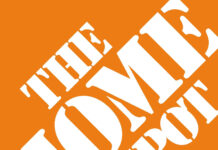WASHINGTON, Feb. 23, 2016 /PRNewswire-HISPANIC PR WIRE/ — Sustainable design is the big trend for residential landscapes, according to the 2016 Residential Landscape Architecture Trends Survey conducted by the American Society of Landscape Architects (ASLA). The top trend—rainwater/graywater harvesting—reflects a growing consumer demand for beautiful residential landscapes that also save water.
Photo – http://photos.prnewswire.com/prnh/20160222/335976
Logo – http://photos.prnewswire.com/prnh/20140325/DC90161LOGO-b
Landscape architects were asked to rate the expected popularity of a variety of residential outdoor design elements in 2016. The survey was fielded February 4 through February 18, 2016, with 803 responding.
Respondents expected the greatest demand for outdoor living spaces that are environmentally sustainable, reduce water costs and are low maintenance.
Here are the top ten project types with the expected highest consumer demand:
- Rainwater/graywater harvesting – 88%
- Native plants – 86%
- Native/adapted drought tolerant plants – 85%
- Low-maintenance landscapes – 85%
- Permeable paving – 77%
- Fire pits/fireplaces – 75%
- Food/vegetable gardens (including orchards, vineyards, etc.) – 75%
- Rain gardens – 73%
- Drip/water-efficient irrigation – 72%
- Reduced lawn area – 72%
Water-focused design elements dominated this year’s top ten list and reflect consumers’ growing commitment to landscapes that reduce water use and stormwater runoff, says Nancy Somerville, Hon. ASLA, executive vice president and CEO of ASLA.
“Water issues are hot topics for many communities, and many people are turning to landscape architects for creative green infrastructure solutions,” said Somerville. “Sustainable residential landscape architecture, if part of a broader integrated site design, can dramatically reduce water usage and stormwater runoff over the long term while creating a healthy residential environment.”
The top three most popular outdoor design elements include fire pits/fireplaces (75 percent), lighting (67 percent) and wireless/internet connectivity (66 percent).
The top landscape and garden elements include native plants (86 percent), low-maintenance landscapes (85 percent) and food/vegetable gardens (75 percent). Pergolas (51 percent), decks (47 percent), arbors (44 percent) and fencing (44 percent) are expected to be the most popular outdoor structures.
The hottest sustainable design elements include rainwater/graywater harvesting (88 percent), native/adapted drought tolerant plants (85 percent) and permeable paving (77 percent).
The most popular outdoor recreation amenities for 2016 will include sports courts (41 percent), spa features (40 percent) and swimming pools (36 percent).
For more landscape ideas for your home, and to find a professional in your area, visit www.asla.org/residentialinfo.
Outdoor Design Elements
Ranked in expected order of popularity for 2016
Fire pits/fireplaces – 75%
Lighting – 67%
Wireless/internet connectivity – 66%
Seating/dining areas – 64%
Outdoor furniture – 63%
Planters, sculptures, garden accessories – 56%
Grills – 54%
Counter space – 50%
Outdoor heaters – 47%
Stereo systems – 40%
Movie/TV/video theaters – 38%
Utility storage – 35%
Sinks – 33%
Refrigerators – 31%
Outdoor cooling systems (including fans) – 29%
Showers/baths – 29%
Hammocks – 21%
Bedrooms/sleeping spaces – 11%
Outdoor Recreation Amenities
Ranked in expected order of popularity for 2016
Sports courts (tennis, bocce, etc.) – 41%
Spa features (hot tubs, Jacuzzis, whirlpools, indoor/outdoor saunas) – 40%
Swimming pools – 36%
Labyrinths – 11%
Landscape/Garden Elements
Ranked in expected order of popularity for 2016
Native plants – 86%
Low-maintenance landscapes – 85%
Food/vegetable gardens (including orchards, vineyards, etc.) – 75%
Rain gardens – 73%
Water-saving xeriscape or dry gardens – 68%
Organic gardens – 64%
Plant walls/vertical gardens – 61%
Rooftop gardens – 55%
Decorative water elements (ornamental pools, fountains, splash pools, waterfalls, grottos, water runnels or bubblers) – 46%
Ponds/streams – 29%
Outdoor Structures
Ranked in expected order of popularity for 2016
Pergolas – 51%
Decks – 47%
Arbors – 44%
Fencing – 44%
Porches – 40%
ADA accessible structures (ramps, bars, shelving, etc.) – 38%
Pavilions – 33%
Play structures (treehouses, swing sets, etc.) – 31%
Utility sheds (tool sheds, garden sheds) – 28%
Gazebos – 24%
Sustainable Elements
Ranked in expected order of popularity for 2016
Rainwater/graywater harvesting – 88%
Native/adapted drought tolerant plants – 85%
Permeable paving – 77%
Drip/water-efficient irrigation – 72%
Reduced lawn area – 72%
Recycled materials – 61%
Solar-powered lights – 56%
Compost bins – 45%
Geothermal heated pools – 28%
About the American Society of Landscape Architects
Founded in 1899, ASLA is the national professional association for landscape architects, representing more than 15,000 members in 49 professional chapters and 72 student chapters. Members of the Society use “ASLA” after their names to denote membership and their commitment to the highest ethical standards of the profession. Landscape architects lead the stewardship, planning and design of our built and natural environments; the Society’s mission is to advance landscape architecture through advocacy, communication, education and fellowship.






